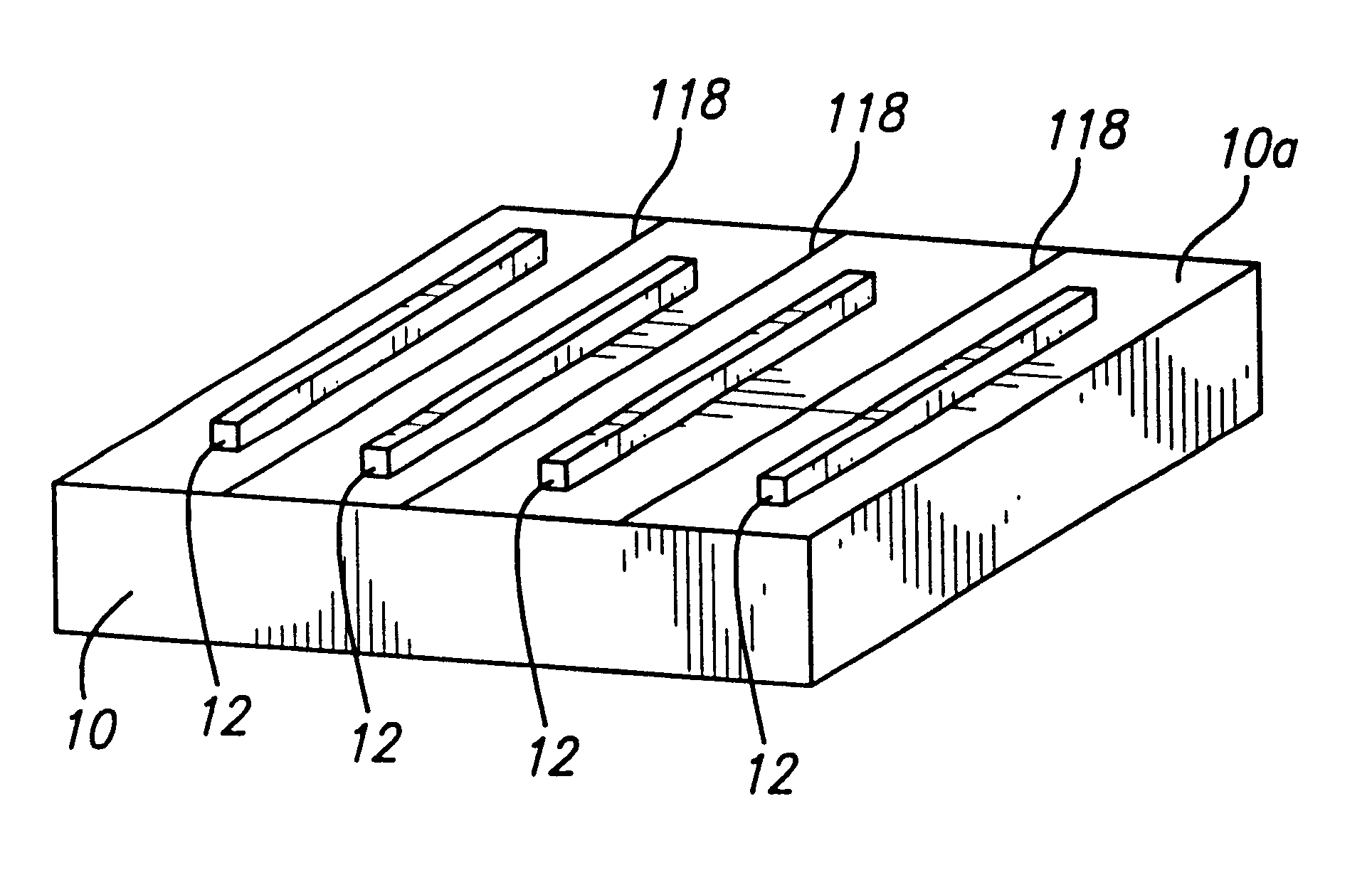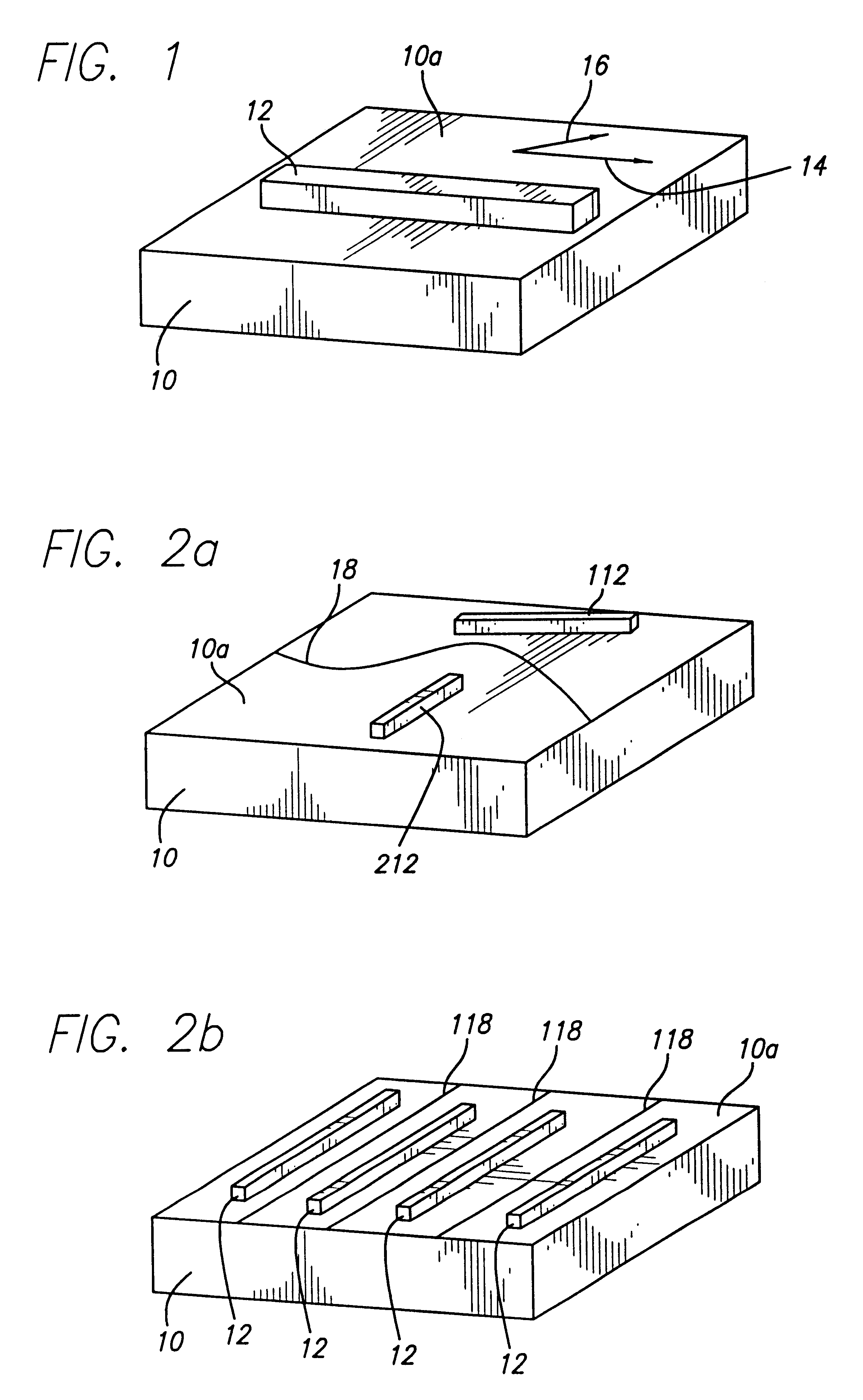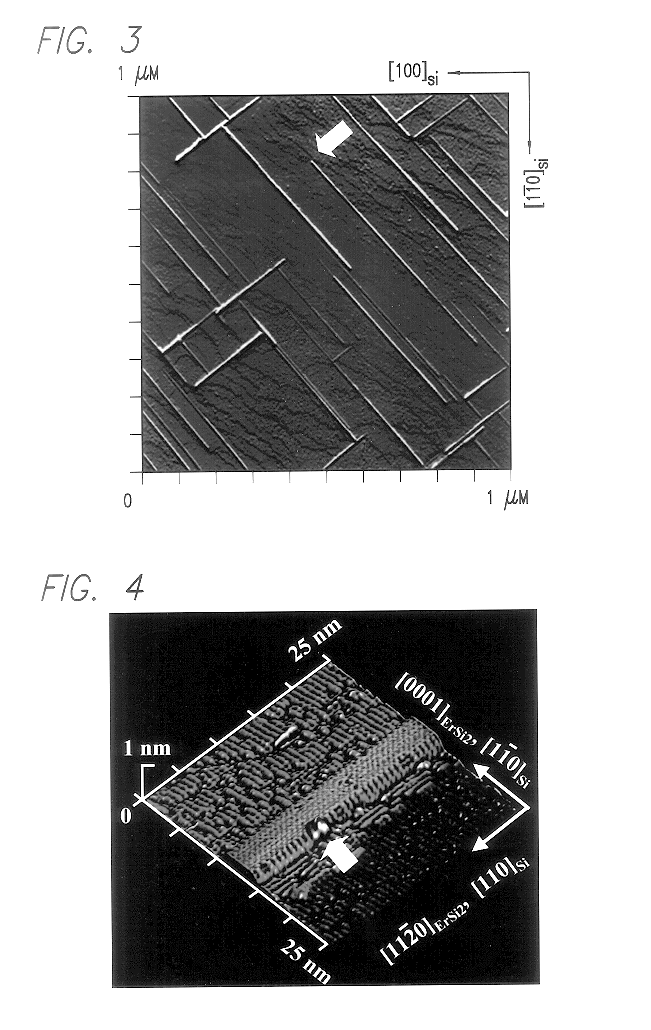Method to grow self-assembled epitaxial nanowires
a technology of epitaxial nanowires and nanowires, which is applied in the field of self-assembling nanowires, can solve the problems of irregular shape and size, difficult to achieve, and wire-like structures
- Summary
- Abstract
- Description
- Claims
- Application Information
AI Technical Summary
Benefits of technology
Problems solved by technology
Method used
Image
Examples
example 1
ErSi.sub.2
The following example demonstrates that by utilizing an epitaxial overlayer that has a carefully chosen lattice mismatch to complement the host substrate, in this case erbium disilicide (ErSi.sub.2) on Si(001), it is possible to grow nanowires. Due to its high conductivity (2.9.times.10.sup.4 (.OMEGA.cm).sup.-1) and low Schottky barrier to n-type Si, ErSi.sub.2 thin films grown on Si substrates have been studied extensively. These studies involved continuous thin films on Si(001) that were several nanometers thick, and they revealed oriented crystallites with a hexagonal A1B.sub.2 -type crystal structure that were thermodynamically stable in contact with Si below 800.degree. C. The [0001] axis of the ErSi.sub.2 was oriented along a axis of the Si(001) substrate, and the [1120] of the ErSi.sub.2 was oriented along the perpendicular axis, with lattice mismatches of +6.5% and -1.3%, respectively, which nearly satisfies the proposed growth conditions for nanowires. Next, sub...
examples 2-5
ErSi.sub.2, ScSi.sub.2, DySi.sub.2, GdSi.sub.2 and Their Comparison
In the following experiments, device quality "flat" Si(001) substrates were prepared as in Example 1.
As measured from STM images, the average terrace widths along [110].sub.Si and [110].sub.Si were 57.8 nm and 21.3 nm, respectively, implying that the normal direction of the surface of the Si substrate used in these experiments was misoriented from [001].sub.Si toward [120].sub.Si by about 0.4.degree..
The final state of the nanowires was influenced by their growth conditions, such as deposition and annealing temperature, deposition rate, coverage of deposited atoms, and annealing time. The physical properties of Sc, Er, Dy, and Gd are similar (e.g., their melting points are 1539.degree. C., 1522.degree. C., 1409.degree. C., and 1314.degree. C. respectively), and the experimentally-determined growth conditions for producing dislocation-free nanowires are also very close. The optimum substrate temperature and time for d...
PUM
| Property | Measurement | Unit |
|---|---|---|
| length | aaaaa | aaaaa |
| length | aaaaa | aaaaa |
| height | aaaaa | aaaaa |
Abstract
Description
Claims
Application Information
 Login to View More
Login to View More - R&D
- Intellectual Property
- Life Sciences
- Materials
- Tech Scout
- Unparalleled Data Quality
- Higher Quality Content
- 60% Fewer Hallucinations
Browse by: Latest US Patents, China's latest patents, Technical Efficacy Thesaurus, Application Domain, Technology Topic, Popular Technical Reports.
© 2025 PatSnap. All rights reserved.Legal|Privacy policy|Modern Slavery Act Transparency Statement|Sitemap|About US| Contact US: help@patsnap.com



